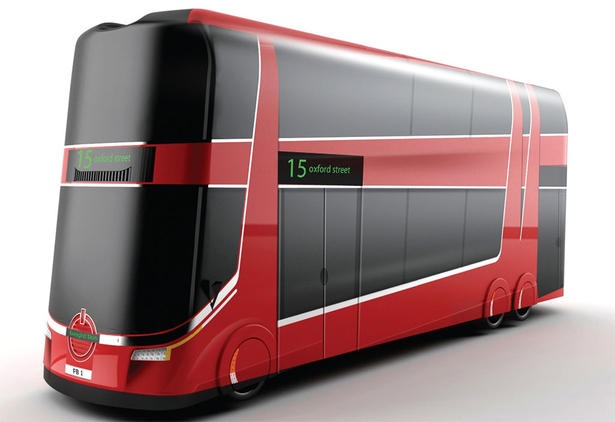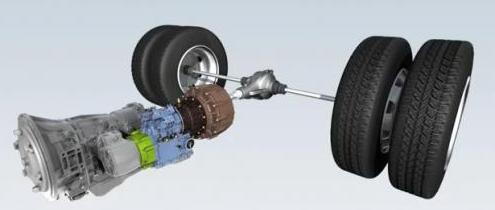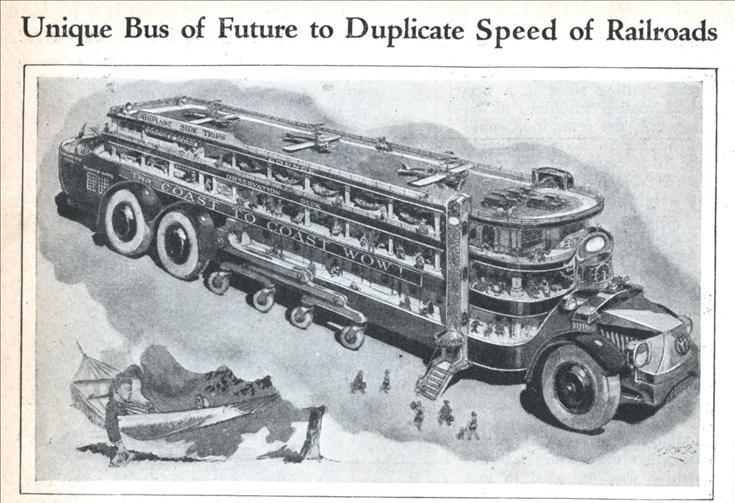 A public transport company in a city called Galactic City, needs to replace its aging city buses with new ones. It asks three bus vendors what they have to offer and if they can do a live test to see if their claims about performance and efficiency holds up.
A public transport company in a city called Galactic City, needs to replace its aging city buses with new ones. It asks three bus vendors what they have to offer and if they can do a live test to see if their claims about performance and efficiency holds up.
The transport company uses the city buses to move people between different locations in the city. The average trip distance is about 2 km. The vendors all prepare their buses for the test. The buses are the latest and greatest, with the most efficient and powerful engines and state of the art technology.
Bus vendor EMCBus has 10 buses that can hold 100 passengers each, with hand luggage. The speed of the buses is 80km/h. They use a recent technology called XtremPass passenger optimization – which is a smart way of predicting what passengers will show up at which bus stop – this prevents stopover times (latency) at the bus stops and lets the buses almost run full speed and with maximum passengers all the time. The difference between the performance of the three vendors is largely determined in their implementation of passenger optimization technology – they all use similar engines from a single supplier – with the same horsepower.
So with an average trip distance each EMCBus can do 30 trips per hour (not including stops because they are almost eliminated), so it carries 3000 passengers to their destination per hour. They run 10 buses for this test so the total capacity of the bus park is 30000 passengers per hour – but of course the test has to prove it!
All the bus vendors set up a similar test with their best test buses, fueled up and loaded for the test runs that take exactly one hour each as instructed by the transport company.
The transport company shows up with the test passengers – but to see how the vendors deal with heavy workload, they asked 90 of each 100 passengers to bring with them – next to their hand luggage:
– 3 large suitcases packed for a 2 week holiday
– Their bicycle
– An extra backpack
– An extra baggage trolley.
The city transport company occasionally has holiday passengers as well during the summer period who want to go on the buses to holiday destinations – so they also tell the bus vendors to run the test not only on 2km trips but also do some round-trips from Galactic City to to Anchorhead (another city in the country) and back instead, for 20% of all trips – which is 1000 km round-trip instead of 2 km. So for every 100 trips each passenger will make, 20 are long-distance and 80 are local short haul and distributed round-robin per passenger.
Hey, the guys from EMCBus comment, that will never happen with city buses, people don’t go on holiday with city buses using a local bus company! We can handle 100 passengers per bus, but not if they all carry that much baggage! And, we can never finish the test in time because it takes a passenger bus much more than one hour to go to Anchorhead and back to Galactic City! Besides, the buses will collapse under the heavy load…
Plus, even if the short/long trip ratio is 80/20, due to the long distance, the buses will spend nearly all their time on the highway between the cities – and we cannot show how efficient our XtremPass technology is. And the trips per hour rate will be worthless because the test method is wrong!
We don’t care, says the transport company, we asked all the vendors the same thing so you should not complain and just do what you’re told.
The engineers from EMCBus company tell their sales guy this is impossible, but he responds to do what is asked because otherwise we will never get a chance to sell new buses. And he needs to reach his quarterly bus sales target or he will be in trouble.
 The engineers wonder how to get 100 people with loads of baggage on the bus, so they strengthen the axles, increase the loading space, weld extra baggage compartments on the roof and build a trailer that they can hang off the back of each bus to carry more load. But it still doesn’t fit. And they have no idea to run the test within an hour because the round-trip takes 15 hours at least to finish a trip.
The engineers wonder how to get 100 people with loads of baggage on the bus, so they strengthen the axles, increase the loading space, weld extra baggage compartments on the roof and build a trailer that they can hang off the back of each bus to carry more load. But it still doesn’t fit. And they have no idea to run the test within an hour because the round-trip takes 15 hours at least to finish a trip.
So they split the test: they run each bus for 50 minutes doing 80 passengers with only hand baggage, and run only short trips first – so they can show the transport company at least how fuel efficient and how fast their buses are for normal workload, and how well their XtremPass passenger optimization feature works. They will never put 100 holiday passengers on city buses anyway.
The remaining 10 minutes are used for quickly hooking up the trailer, loading it with baggage, and then scram 100 passengers with their carry-ons and full luggage in the buses and the trailers, and start driving from Galactic City to Anchorhead. But after 10 minutes they stop at the first gas station because the test is supposed to end in 1 hour. They never reach Anchorhead…
The engineers are still quite happy because they got a decent transaction rate: 80 passengers * 25 trips is still 2000 trips per hour (transaction rate) – not bad at all!. The trip rate for the remaining 10 minutes is zero, because not a single trip was finished although the kilograms-kilometer per minute (the bandwidth) was enormous because of the extra baggage capacity and strengthened axles.
EMCBus sends in the results just before the deadline passes, with a big smile. Nice accomplishment for a mission impossible!
But the customer asked for the trip rate, not the bulk transport capacity. The next day the transport company guys are complaining: you didn’t do what we asked! how can we compare numbers if every bus vendor is doing different things! You need to run the test EXACTLY how we told you!
The engineers wonder if the transport guys ever tried to run such a workload on their own aging bus park – probably not…
 So they leave the strengthened axles and the trailer on the 10 buses and load them up with 100 passengers each, plus their heavy luggage. They send them off to do a few short 5-minute trips first, then set off from Galactic City to Anchorhead and ask the drivers to stop at the first gas station after one hour has passed…
So they leave the strengthened axles and the trailer on the 10 buses and load them up with 100 passengers each, plus their heavy luggage. They send them off to do a few short 5-minute trips first, then set off from Galactic City to Anchorhead and ask the drivers to stop at the first gas station after one hour has passed…
Transaction rate of course is very low because each bus will do 4 or 5 short trips, then set off for the long run which of course never completes in time.
According to the engineers, total trips per hour (transaction rate) is not a good value for long haul scenarios. The kilograms-kilometer per minute (bandwidth) is a much better way to measure bus transport capacity for long haul. But the transport company asked for trips per minute so the results will not make sense at all… Not to mention the average trip time per passenger (response time) for trips that never finish. The results will be purely arbitrary, showing a random-ish outcome.
From the 3 vendors, the one who has accidentally started the test with a few more short trips, and happens to reach a gas station just after passing the 1-hour mark instead of driving on for 10 more minutes to reach one and stop, has an artificially higher trips per minute rate, therefore likely wins the benchmark.
But….
 Vendor “ExaBus” has implemented a few special features on their buses especially for Bus benchmarks (POCs) like this. They have 8 main passenger buses instead of 10 – very similar to the others in performance – but without fast passenger optimization. That optimization is implemented on 14 separate luggage-only buses and is called ExaFlashPass. The luggage-only buses also have a feature called ExaSmartRun that allows the buses to pre-load baggage and depart to the destination a day before running the actual test. The luggage buses wait 1 km outside of Anchorhead’s city lines. Of course you can only do this with test passengers that have to bring their luggage a day in advance – in the real world this would never work for a city bus company – because you never know what customer shows up and what luggage he is bringing along. But for a POC this is a brilliant feature!
Vendor “ExaBus” has implemented a few special features on their buses especially for Bus benchmarks (POCs) like this. They have 8 main passenger buses instead of 10 – very similar to the others in performance – but without fast passenger optimization. That optimization is implemented on 14 separate luggage-only buses and is called ExaFlashPass. The luggage-only buses also have a feature called ExaSmartRun that allows the buses to pre-load baggage and depart to the destination a day before running the actual test. The luggage buses wait 1 km outside of Anchorhead’s city lines. Of course you can only do this with test passengers that have to bring their luggage a day in advance – in the real world this would never work for a city bus company – because you never know what customer shows up and what luggage he is bringing along. But for a POC this is a brilliant feature!
The ExaBus passenger buses also have a special feature called HPC (Hybrid Passenger Compression) that allows 5 passengers to sit on each others lap occupying only one chair. ExaBus marketing actually tells customers they are the inventors of the concept of stacking passengers on each others’ lap (no-one has ever attempted that before) – and – this feature works for all passenger and luggage types – and – according to them – it compresses load by well over 10x – but actual real world ratios are much less. And what they also don’t tell customers is that it doesn’t work for luggage, only for passengers. And of course the feature doesn’t work for city buses – because how can the first customer leave the bus stop at his destination if 4 others are sitting on his lap? So the feature only works for long-haul trips and you have to load passengers in a special – pre-sorted way. Which for this test doesn’t matter much.
So the 8 Exabuses leave with 500 users each – instead of 100 – without heavy baggage – because their baggage was already sent to Anchorhead in the 14 luggage-only buses. When the passengers buses leave, the Exabus bus drivers call each other via iDP (infinite Direct Passenger protocol) and the passenger bus drivers tell the luggage bus drivers to start moving. After a minute or so, the luggage buses arrive in Anchorhead and call back the passenger bus drivers – and tell them to detour immediately and return to Galactic City A.S.A.P. – because the luggage already arrived at the destination. Their trips per minute rate goes through the roof, even with this complex transport scenario!
Guess who wins the deal for new buses 🙂
![]()

But the transport company had a clear test set up, so they could compare apples to apples! If they did it the way that EMCBus suggested, it would mean they have to rate each vendor’s solution on its own merits and then try to compare. That would be a much larger effort than simply comparing the different rates, where the highest wins.
Clearly comparing rates is the best short-term solution for the transport company. .. Oh, wait…
You got it 🙂